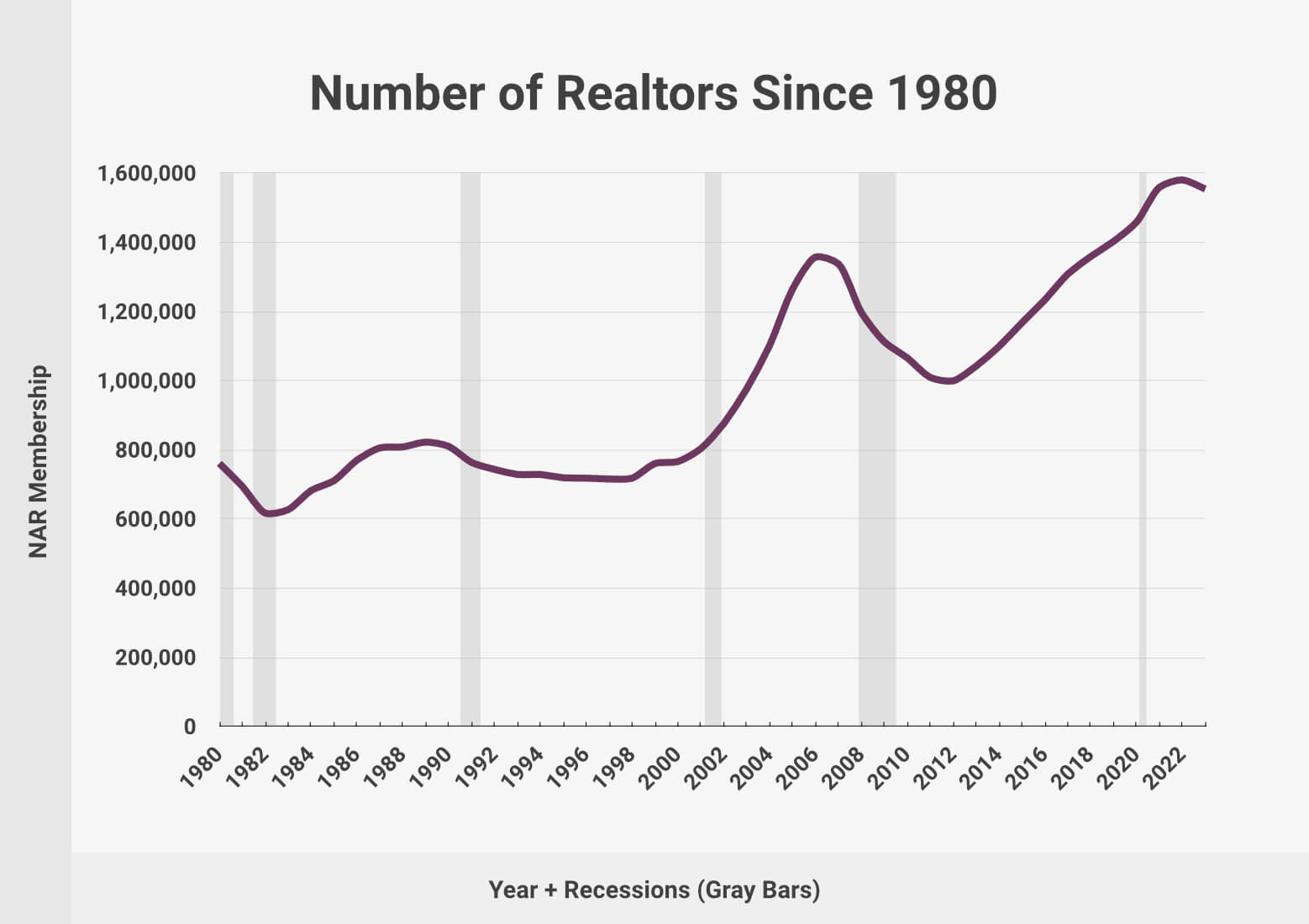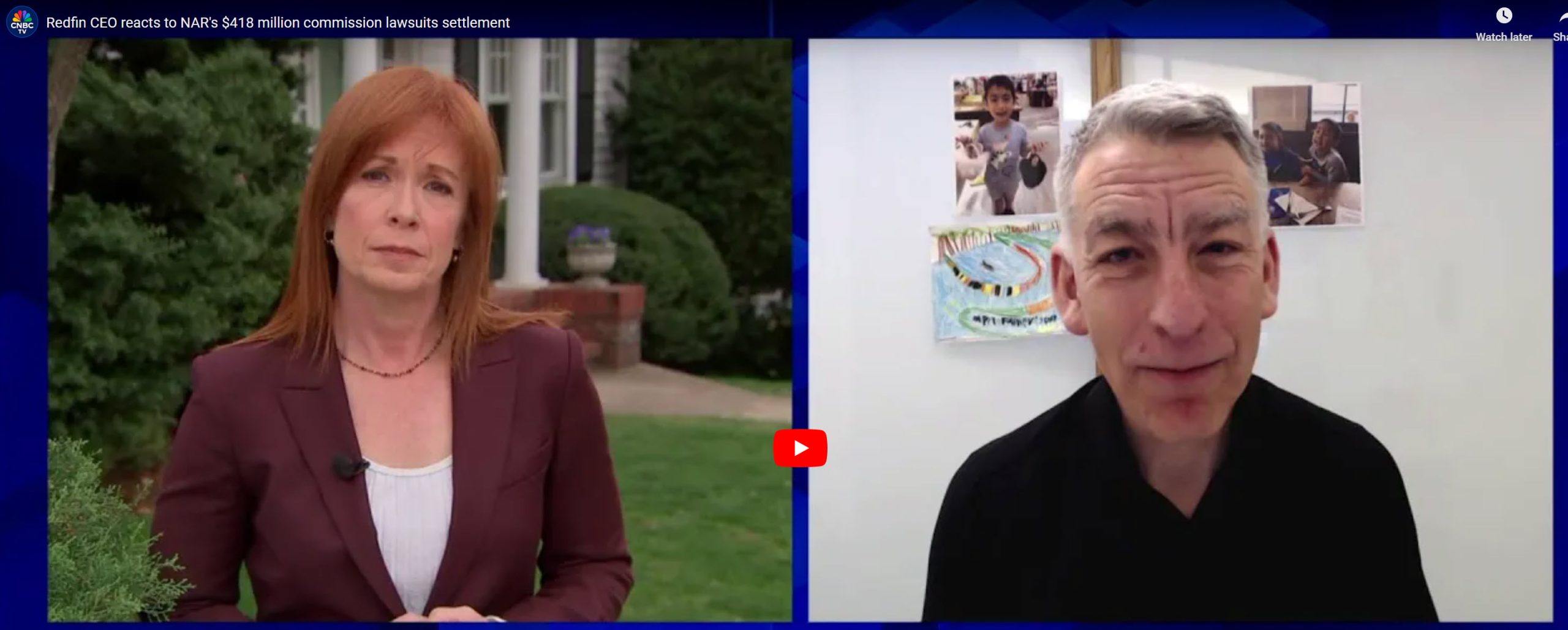The real estate landscape is constantly changing due to various factors such as market trends,…
How Many Real Estate Agents in the USA?
In 2024, the United States real estate sector is set to mark a significant milestone, with an estimated 7.62 real estate professionals for every 1,000 adults. This fascinating statistic is derived from an adult population projected at 262.57 million, with roughly 2 million active real estate agents across the nation.
Introduction: The Role of Real Estate Agents
Real estate agents are pivotal in facilitating real estate transactions, acting as the bridge between property buyers and sellers. These agents are instrumental in helping clients wade through the intricacies of the real estate market, from accurately pricing properties and effectively marketing listings to skillfully negotiating contracts and steering clients through the entire buying or selling journey.
How Many Realtors Are There in Each State?
- The states with the most Realtors are Florida (225,563), California (204,678), and Texas (150,141).
- Vermont is the state has the fewest (1,787).
- The Virgin Islands (387) has the fewest of the U.S. Territories.
To grasp the magnitude of the real estate agent profession in the USA, an analysis of agent distribution by state is essential. The National Association of Realtors (NAR) offers invaluable insights into the membership count of real estate agents nationwide, shedding light on the profession’s scope.
The latest data indicates that Florida, California, and Texas are the states with the most real estate agents. Florida is at the forefront with an impressive 225,563 Realtors, California is a close second with 204,678, and Texas follows with 150,141 Realtors. Conversely, Vermont has the smallest Realtor community, with a mere 1,787 members.
Let’s take a closer look at the number of Realtors in each state:
|
State |
Number of Realtors |
|---|---|
|
Alabama |
18,653 |
|
Alaska |
1,915 |
|
Arizona |
53,422 |
|
Arkansas |
11,251 |
|
California |
204,678 |
|
Colorado |
27,303 |
|
Connecticut |
18,983 |
|
Delaware |
4,332 |
|
District Of Columbia |
2,838 |
|
Florida |
225,563 |
|
Georgia |
47,086 |
|
Guam |
579 |
|
Hawaii |
10,308 |
|
Idaho |
11,619 |
|
Illinois |
49,137 |
|
Indiana |
20,887 |
|
Iowa |
8,060 |
|
Kansas |
10,425 |
|
Kentucky |
13,108 |
|
Louisiana |
15,799 |
|
Maine |
5,629 |
|
Maryland |
27,195 |
|
Massachusetts |
25,056 |
|
Michigan |
34,804 |
|
Minnesota |
21,809 |
|
Mississippi |
7,446 |
|
Missouri |
26,138 |
|
Montana |
5,724 |
|
Nebraska |
5,389 |
|
Nevada |
19,451 |
|
New Hampshire |
6,526 |
|
New Jersey |
59,593 |
|
New Mexico |
7,661 |
|
New York |
61,799 |
|
North Carolina |
54,655 |
|
North Dakota |
2,051 |
|
Ohio |
37,035 |
|
Oklahoma |
13,962 |
|
Oregon |
18,001 |
|
Pennsylvania |
38,701 |
|
Puerto Rico |
1,237 |
|
Rhode Island |
5,210 |
|
South Carolina |
25,634 |
|
South Dakota |
2,262 |
|
Tennessee |
35,661 |
|
Texas |
150,141 |
|
Utah |
19,237 |
|
Vermont |
1,787 |
|
Virgin Islands |
387 |
|
Virginia |
34,607 |
|
Washington |
20,893 |
|
West Virginia |
3,410 |
|
Wisconsin |
16,925 |
|
Wyoming |
2,633 |
| Total | 1,554,604 |
Is the Number of Realtors Growing or Declining?
The population of real estate agents in the United States is subject to change, swayed by economic conditions and prevailing market trends. In prosperous periods with a booming economy, the real estate profession often sees a rise in agents as the demand for property ownership escalates. However, during recessions, the industry may witness a decline in agents as challenging market conditions prompt professionals to exit the field.
Since its inception in 1908, the National Association of Realtors has seen its membership numbers ebb and flow, with periods of both steady growth and remarkable spikes. Notably, between 1974 and 1975, the association experienced a dramatic 224% increase in membership, ballooning from 134,362 to 435,485 Realtors, a testament to the buoyant market conditions of that era.
Our chart offers a visual representation of the fluctuating numbers of real estate agents in the United States, drawing a parallel with the nation’s economic health. It also marks the years of economic recession, illustrating a tangible link between the economy’s performance and the real estate industry’s labor force.
Cities with the Highest Concentration of Employed Sales Agents
Delving into the profession of real estate agents, it’s crucial to analyze the urban areas boasting the highest density of these professionals. The U.S. Bureau of Labor Statistics (BLS) sheds light on the employment figures across metropolitan regions, enabling a comparative look at the prevalence of agents within the local labor markets.
The most recent figures indicate that the Miami-Ft Lauderdale-West Palm Beach metropolitan zone leads in the employment of real estate agents, hosting 11,070 agents. This equates to an impressive ratio of about 4.22 real estate agents for every 1,000 jobs in the region. Other metropolitan areas with significant numbers of agents include Houston-The Woodlands-Sugar Land, Dallas-Ft Worth-Arlington, and Atlanta-Sandy Springs-Roswell.
Zooming in on the cities with the highest employment levels, we find a notable presence of real estate agents shaping the industry’s landscape.
|
Metropolitan Area |
Employment |
Employment/1000 Jobs |
|---|---|---|
|
Miami-Ft Lauderdale-West Palm Beach, FL |
11,070 |
4.22 |
|
Houston-The Woodlands-Sugar Land, TX |
9,350 |
3.06 |
|
Dallas-Ft Worth-Arlington, TX |
9,290 |
2.44 |
|
Atlanta-Sandy Springs-Roswell, GA |
7,250 |
2.66 |
|
Phoenix-Mesa-Scottsdale, AZ |
7,200 |
3.24 |
|
New York-Newark-Jersey City, NY-NJ-PA |
6,040 |
0.66 |
|
Los Angeles-Long Beach-Anaheim, CA |
5,720 |
0.94 |
|
Orlando-Kissimmee-Sanford, FL |
5,080 |
3.91 |
|
Denver-Aurora-Lakewood, CO |
3,920 |
2.53 |
|
Tampa-St. Petersburg-Clearwater, FL |
3,840 |
2.81 |
It’s pivotal to recognize that these figures reflect the concentration of actively employed sales agents, rather than the total count of real estate agents in these metropolitan areas.
Conclusion: The Evolving Landscape of Real Estate Agents in the USA
With so many real estate agents out there, it can feel overwhelming. It’s like everywhere you turn, there’s another one. But here’s something to think about: with so many agents available, not all of them will be the right fit for you. So how do you choose? We’ve got a couple of tips to help you out.
First off, find an agent you’re comfortable with. Just because an agent doesn’t have a long list of transactions doesn’t mean they aren’t great at what they do. And on the flip side, just because an agent is super busy, doesn’t guarantee they’ll be the best match for you. The key is comfort and trust. A solid way to find someone you’ll click with is by getting a referral from someone who’s had a successful experience. And if you need a hand finding referrals, we at 719 Lending are here to help.
Second, take a look at their experience. It can be a bit tricky though. An agent might be new but part of a dynamic and supportive team, setting you up for a successful partnership. Don’t hesitate to ask questions, especially about their recent sales and knowledge of your area. Remember, just because someone has been in the business for years doesn’t mean they’re automatically the best choice. It’s all about how well they can meet your needs now.
And here’s a final thought: working with a realtor can make your transaction much smoother. They’re your advocate through this process. We see the difference they make every day, working alongside both for sale by owners and agents.
Sources
National Association of Realtors (NAR)
U.S. Bureau of Labor Statistics
Federal Reserve Bank of St. Louis





